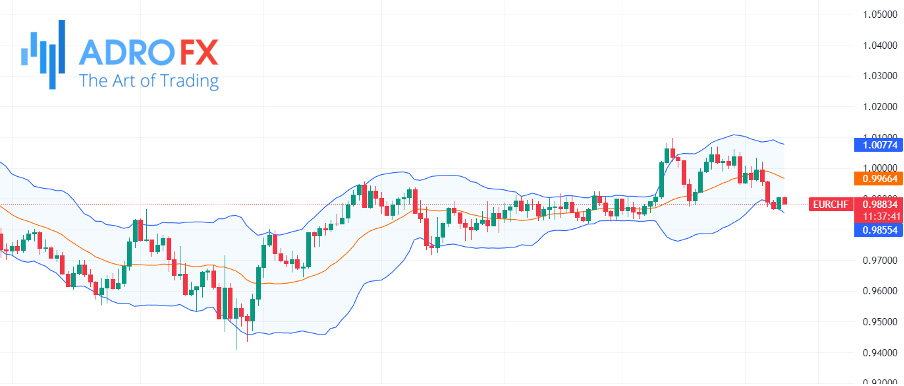Trading Flat: Definition, How It Works, and Types of Situations

The trend is your friend. That`s what a popular phrase in the world of trading calls to trade only with the trend. But what to do if the market is flat 70% of the time and only 30% of the time it is trending? The answer is that profitable trading is also possible during a flat market. This article will help you to understand what flat is in trading, how to identify it, and how to use it in trading.
What Is a Flat?
The flat is a state of the market when the price moves in a certain range without a clearly defined direction. The boundary breakout usually means the end of the flat and the beginning of a new trend.

Often among traders, one can meet such terms as consolidation, sideways trend, and sideways trend. All of these terms are synonyms for flat and are equivalent to it.
What Causes a Flat Appearance
There are several reasons for the consolidation:
- Trading session
If we take the example of the currency markets, then the Asian session is a time of flat conditions for American and European currencies. During this period, the most active trades are currency pairs with the yen.
- The expectation of important economic news
Sideway movement is often observed before the news is released. Traders do not risk entering new positions as after the news release there is a high probability of a powerful breakthrough in the unknown direction.
- The expectation for the central bank's decision on the interest rate has the same effect as the news.
- Low liquidity
A shortage of buyers and sellers for a particular instrument causes a flat.
- A small volume of trading contracts on holidays
Only a large amount of funds can provide high volatility on the exchange, and at small volumes, there is a sideways movement.
Narrow and Wide Flat
The flat may be both narrow and wide. It is determined by the distance from the lower boundary of the sideways trend to the upper boundary and measured in points.
The narrow flat appears in situations when the demand on the market is equal to the supply, i.e. the forces of buyers and sellers are equal. During this period, as a rule, no significant news and events are expected.
A wide flat is formed when the price is squeezed between strong support and resistance levels. In this case, neither the bulls nor the bears have enough strength to win by initiating a new trend.
What Are the Drawbacks of a Sideways Trend?

Most traders prefer to trade in a clearly defined trend and are wary of flat trades. Trading during consolidation is limited by a narrow price range and unpredictability. Trading in a flat market requires constant supervision to be able to open or close trades at any time. An alternative is to place a large number of orders to open positions together with Stop Loss and Take Profit, which is not very convenient.
Professional traders have created a lot of indicators and systems that help to correctly assess the situation at the exchange and make a profit.
How to Identify a Flat: Indicators and Signs
The following tools can be used to determine a consolidation:
Stochastic Oscillator - shows on the chart the position of the current price in relation to past prices for a certain period. Finding it in the middle is a sign of consolidation.
RSI (Relative Strength Index) - an oscillator that shows the strength of the trend. When it is in the middle of the range it is a sign that the market is entering a flat area.
Moving Average is a trend indicator, which shows the average value of the asset price at the financial market for a certain period. The interlacing of Moving Averages signals a flat.
Bollinger Bands show the volatility of the market and the trend direction. The indicator consists of three lines, which form a channel. The narrowing of the channel indicates the presence of consolidation.
Trading Flat
There are various ways of trading during the flat. We will consider two of them.
Bounce trading from the flat's boundaries is designed for the continuation of consolidation. When using this trading approach, it's important to take into account the absence of important news which might provoke a strong movement. In addition, it is advisable to place Stop Losses over the range boundaries as an additional hedge.
Trading flat boundaries breakout is based on the fact that the flat ends and a new trend is expected to start. As a rule, the price breaks out the flat and leaves the range in a rather sharp movement. As soon as the price leaves the boundaries of a sideways trend, it is the key to a successful trade. Stop orders should be used to avoid missing the moment of entry on an impulse.
Regardless of the trading method, it is important to remember not to rely only on the indicators only. For profitable trading, it is best to use technical analysis in combination with fundamental analysis.
About AdroFx
Established in 2018, AdroFx is known for its high technology and its ability to deliver high-quality brokerage services in more than 200 countries around the world. AdroFx makes every effort to keep its customers satisfied and to meet all the trading needs of any trader. With the five types of trading accounts, we have all it takes to fit any traders` needs and styles. The company provides access to 115+ trading instruments, including currencies, metals, stocks, and cryptocurrencies, which make it possible to make the most out of trading on the financial markets. Considering all the above, AdroFx is the perfect variant for anyone who doesn't settle for less than the best.










